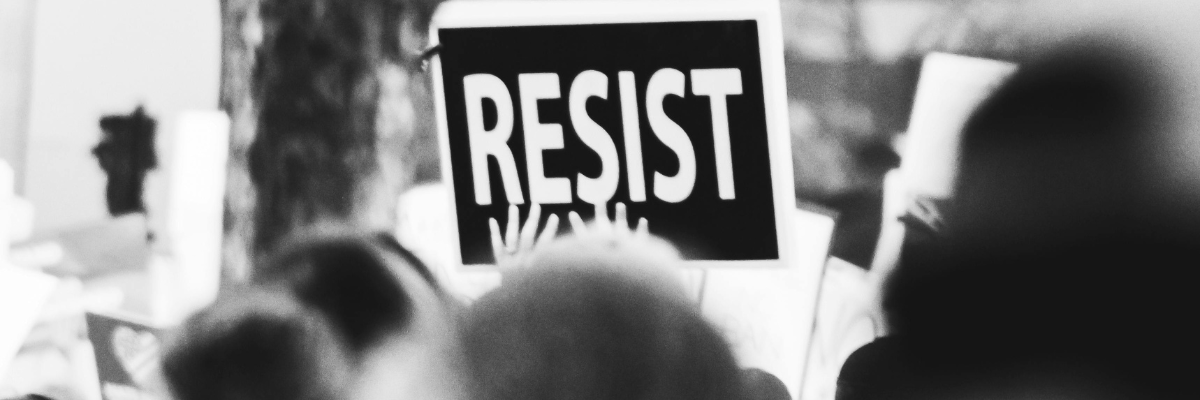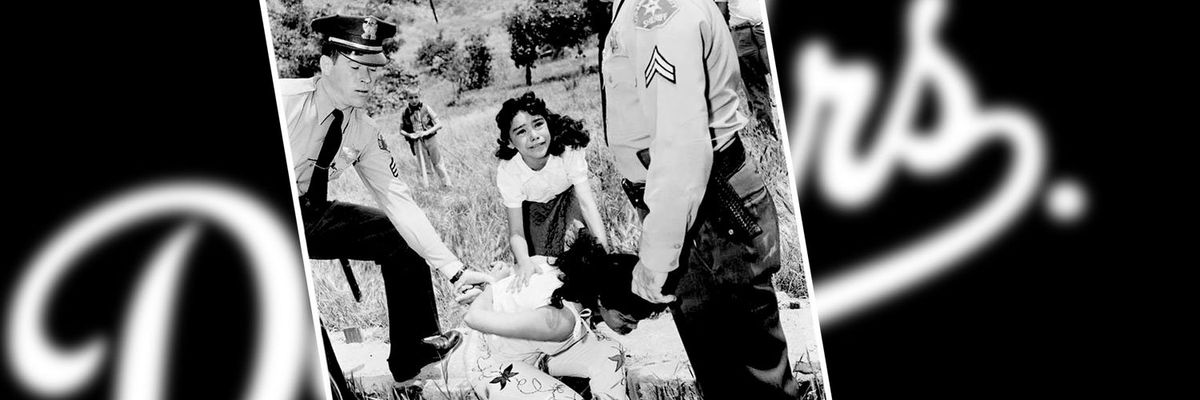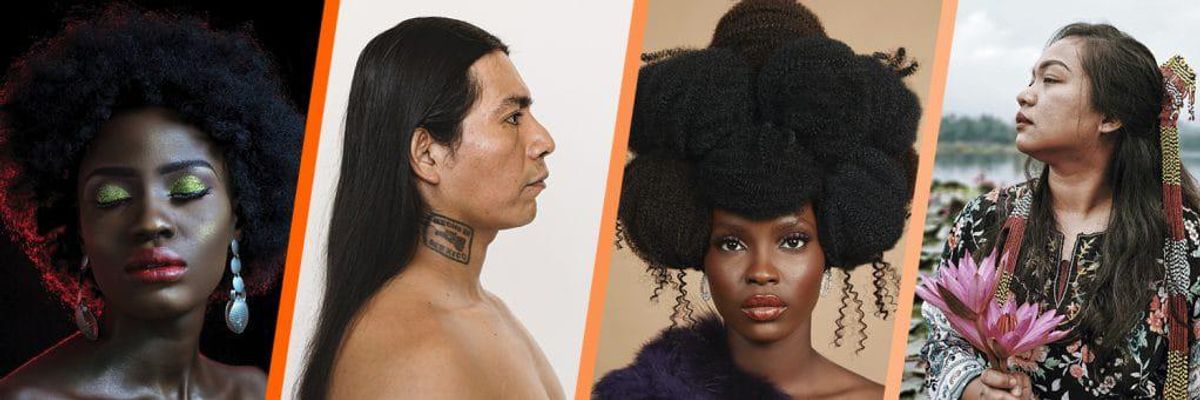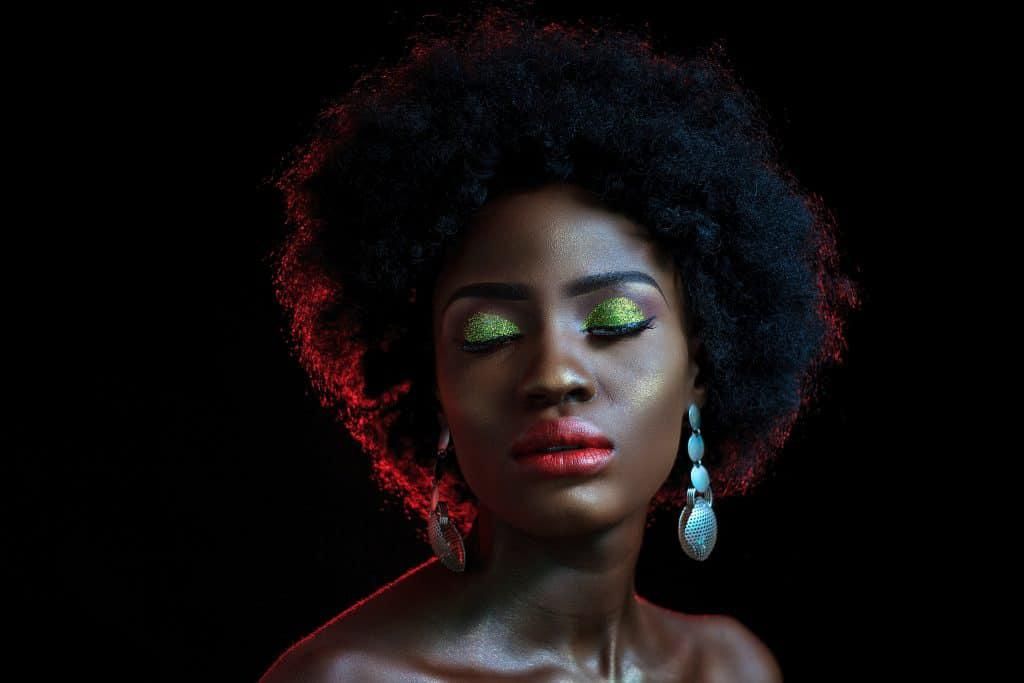In The Community
The recent situation in Venezuela is a stark reminder that many countries in the world are currently under a dictatorship. While the people are doing everything they can to get rid of oppressive regimes, those regimes seem to prevail. They’re like stubborn stains; tough to get rid of but not impossible. Latin America has had its fair share of authoritarian regimes, teaching us valuable lessons about resilience and hope. Today, we thought we would explore 8 of the main reasons why these regimes are hard to overthrow, but understanding that dictatorships don’t last forever:
They have control over the military
 Photo by Matias Luge on Unsplash
Photo by Matias Luge on UnsplashDictators often secure their grip by controlling the military and then they use armed forces to maintain power instead of protecting the people. However, history shows that military loyalty isn’t guaranteed forever. Eventually, motivations and goals stop aligning, and the tides start turning.
They have sturdy propaganda machines
 Photo by Sinitta Leunen on Unsplash
Photo by Sinitta Leunen on UnsplashFrom controlling the media to spreading fake news, dictatorships thrive on propaganda. They paint themselves as the saviors and anyone opposing them as enemies. Yet, the rise of the internet and social media means the truth can still seep through the cracks. The more people are exposed to the truth and unbiased information, the less effective propaganda will be.
They practice political repression
 Photo by Shalom de León on Unsplash
Photo by Shalom de León on UnsplashDictatorships are notorious for silencing dissent through arrests and more extreme measures like torture and even death. Despite this, movements like those in Venezuela and Cuba demonstrate that the human spirit can’t be easily crushed. Despite losses, the people are willing to sacrifice to achieve freedom. If not for themselves, then for their neighbors or the next generation.
They often have foreign support
 Photo by Christine Roy on Unsplash
Photo by Christine Roy on UnsplashSome dictatorships survive thanks to foreign aid and alliances. For example, some Latin American dictators received support from powerful countries. But international pressure can also be a game-changer, as seen with the global stance against apartheid in South Africa.
They manipulate the culture

Photo by Liza Summer
Dictatorships often exploit nationalistic sentiments and cultural narratives to legitimize their rule. They rewrite history and manipulate symbols to get the people on their side to support their own suffering. Still, grassroots cultural movements and the preservation of true historical narratives keep hope alive.
They rely on fear and intimidation
 Photo by Khaled Ali on Unsplash
Photo by Khaled Ali on UnsplashFear is a dictator's best friend. People are often too scared to rise against the regime, but bravery is contagious. The courage of a few can inspire many and mobilize the entire country (sometimes even the entire world), leading to mass movements like the ones seen in Nicaragua and Guatemala.
They cause division among the opposition

Photo by Marta Nogueira
Dictators often exploit divisions within opposition groups to maintain power. However, as seen in many Latin American countries, unity among opposition forces can lead to powerful coalitions capable of challenging dictators. A common goal and common desire to do what it takes to obtain freedom can lead to powerful coalitions capable of challenging dictators and lead to change.
They create a perception of invincibility

Photo by Pixabay
Dictators often seem invincible, convincing people that resistance won’t accomplish anything. But history has shown that no dictatorship is unbreakable and they all eventually do topple. From Argentina’s military junta to the fall of Fujimori in Peru, historical precedent tells us that dictatorships can and do fall.
So, while dictatorships are indeed difficult to topple, they’re not invincible. The power of the people, the resilience of the human spirit, and the relentless pursuit of justice can and will lead to brighter, freer days. History’s on the side of people who stand against tyranny!
- 5 Latina Activists Disrupting the Political Status Quo ›
- Books Are Inherently Political: It's Why They Are Burned and Banned ›
Bill Seeks Reparations for Mexican American Families Forcibly Displaced to Build Dodger Stadium
A new bill introduced in the California Legislature aims to address a historical injustice by seeking reparations for families who were forcibly displaced from their homes in Los Angeles in the 1950s to make way for what is now the Dodger Stadium. The proposed legislation, named the “Chavez Ravine Accountability Act”, represents a significant step toward acknowledging and rectifying the harm done to the Mexican American community.
The story of the Chavez Ravine displacement has been well-documented, but it has taken over 70 years for those affected to see some kind of acknowledgment. In recent years, descendants of marginalized communities in California, who founded the nonprofit organization Buried Under the Blue, have had success seeking reparations for land that was taken from them, and this bill is a reminder that the hard work they’ve put in hasn’t been in vain.
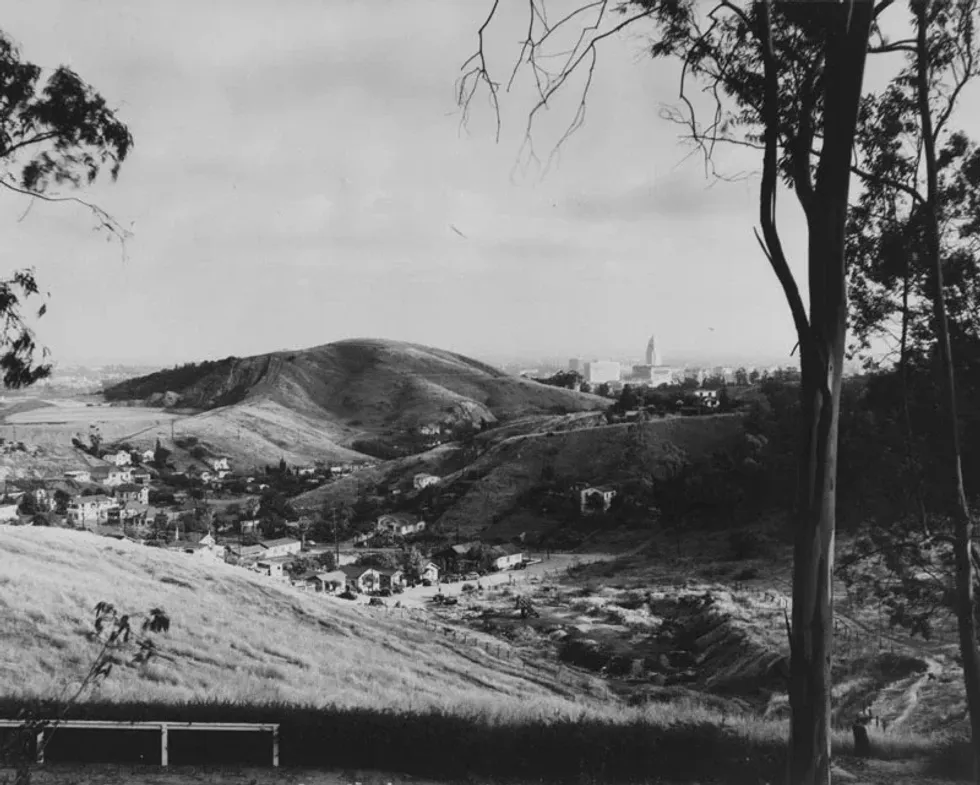
The Shameful Displacement of the Chavez Ravine
The Chavez Ravine, the land on which the Dodger Stadium has been standing for 62 years, used to be a vibrant community of Mexican Americans. Despite being labeled a "poor man’s Shangri La," it was a self-sufficient city covering over 300 acres. However, in the early 1950s, the Los Angeles City Housing Authority set its sights on it for redevelopment.
Claiming “urban renewal,” residents of the Chavez Ravine received letters demanding the sale of their homes for a proposed housing project called “Elysian Park Heights.” Many of the residents were promised housing when the project was completed, but most of them received a small compensation or nothing at all. The displacement of the Chavez Ravine was violent and traumatic, as people were forcibly removed from their homes, which were later demolished.
One of the figures of Latino resistance who stand out in this dark episode of L.A. history is Aurora Vargas, known as “Lola,” who reportedly said, 'They'll have to carry me [out].” That’s exactly what they did, prompting the infamous image of Vargas being carried out by a group of deputies as she refused to leave her home behind, fighting until the last moment. Vargas wasn’t the only one who resisted, and the displacement was marked by adults and children screaming and crying hysterically.

The promised housing project never came to be because once the land was cleared, the owner of the Brooklyn Dodgers, Walter O’Malley, saw the opportunity to secure the land for a fraction of what it was worth. Eventually, the Dodger Stadium was built, betraying the promises made to the Chavez Ravine residents who ended up homeless, struggling to get back on their feet.
What Does This Chavez Ravine Accountability Act Mean?
Written by Assemblywoman Wendy Carrillo, a Democrat from Los Angeles, the “Chavez Ravine Accountability Act” is the response to long-standing demands from organizers and descendants of the displaced families for restitution. If passed, a nine-member task force will be created to oversee the compensation process for all the families.
The bill emphasizes the injustice displaced families experienced, emphasizing that they weren’t only removed from their homes, but also deprived of the opportunity to own homes and create intergenerational wealth. Moreover, it offers different forms of compensation for the families, including city-owned land or fair-market-value payments.
Another key aspect of the bill is that, if passed, it will lead to the establishment of a permanent memorial at the site to honor the displaced families and preserve the memory of their communities. Additionally, a searchable database detailing the history of land acquisition will be created to facilitate the verification of eligible recipients.
Photos by Assembly member Wendy Carrillo
Press conference and protest for families displaced from #ChavezRavine, LA.



The bill has garnered support from descendants of the displaced families, including Melissa Arechiga, Jeannie Arechiga, and Vincent Montalvo, who founded the nonprofit organization Buried Under the Blue to raise awareness about the displacement's legacy. While the Arechigas and Montalvo are grateful for this step in the right direction, they’re also advocating for the Dodgers to be involved in the reparations because they continue to benefit from the land.
What Comes Next?
While the introduction of this bill is a significant milestone, there’s still a long way to go. The legislative process is long and the bill requires consideration by the California Assembly's Judiciary Committee, approval by both chambers of the State Legislature, and the signature of Governor Gavin Newsom before it can become law.
For advocates and the affected community, the bill validates their efforts and it means a step toward rectifying a historical injustice that has been ignored for so long. It also echoes the strength and spirit of resistance shown by people like Aurora Vargas, and it offers the families hope for healing after their lives were altered so drastically.
A hairstyle is not a random collection of knots, braids, and cuts. Hair isn’t just fiber growing from your scalp. It has a deep connection to the personality, sense of belonging, and stylistic expression of Black and Indigenous people. It’s also proof of their resistance, their endurance, and singularity. Indigenous people perceive it as a reflection of their knowledge, culture, and pride. It’s their personality shown through those fibers. Other people see it as an extension of themselves, a way to communicate who they are or experiment with their expression.
In the 15th century in West Africa, men and women used it to identify themselves as a part of a specific tribe. In some cases, the more elaborate the hairdo, the higher your place in the hierarchy. It gave them a sense of belonging and pride in who they were. Oiling, brushing, and braiding, was so crucial that anyone who didn’t nurture and make themselves intricate updos were deemed not emotionally stable.
Then slavery came. Black people were violently removed from their countries and white people wanted to remove any trace of their origin, which meant shaving heads to remove the possibility of tracing back to their roots. They used their hair to store food, like rice, to help them survive the atrocious environment they were forced into. Then hair evolved to be used as a form of communication.
They used their talent at braiding to create designs detailing the roads they walked so people could have guidance or pinpointed places where they could be free of bondage. They were using what they knew to get their liberty back.
After Black people regained freedom, much of the racist practices remained. That’s why in the 60s Black people knew no matter how much they changed how they talked, their hair, or the clothes they wore, they would still be killed, rejected, and pushed away from the dominant white societal hierarchy. So their hair, especially afros, was politicized and reshaped as more than just a style choice. In fact, wearing your big, gorgeous hair wasn’t a style choice, it became a form of protest and resistance and acknowledgment of your roots, a demonstration of your pride.
Indigenous people carry their long luscious hair pridefully and it carries significant meaning. It embodies the connection between them and the world. It represents their strength and the knowledge they’ve inherited from their ancestors. It all changes depending on the tribe, but they all share the same practice. Having long hair is a way to connect to their people, traditions, and personality.
After outright racist efforts to make them stick to a eurocentric standard of grooming, like the 1902 order, where they forced Indigenous men to cut their hair so they could adapt and be “part of the change,” letting their hair grow long and strong became a silent but powerful protest to the years of abuse and oppression experienced at the hands of white oppressors.
To this day boys and men get teased, bothered and harassed about their decision to use long hair and braids.
Eurocentric beauty standards, white supremacy, and racism have tried to eliminate traditions, and cultural expressions important to Black and Indigenous people—imposing a white-centric view of how people are supposed to look which tries to strip people’s uniqueness and inner power. The constant policing of how BIPOC uses their hair reflects racist foundations and blocks people of color from their right to be true to themselves.
People keep on being judged by their hair, be it the shape, the length, the form of the color. White people question their professionalism as soon as your hair looks different but are quick to culturally appropriate it themselves. Stereotypes and regulations of how to wear your hair are demeaning practices. Women receive constant questioning and attempted discredit of their successes and credentials. There’s even a song about it!
@hebontheweb I will die on this hill and you absolutely cannot tell me otherwise
I will die on this hill and you absolutely cannot tell me otherwise
Efforts like the CROWN act are finally trying to tackle from a legal standpoint the harassment, and racist policies Black people are subjected to. Indigenous people continue to let their hair grow, and people are rocking their favorite colors. The courage of presenting yourself as you are is slowly but surely gaining space in popular narratives, and people will still keep fighting back to be who they are.
- Dismantling Shame: Embracing Curly Hair in Latine Culture ›
- Hair Braids in Latino Culture: History or Appropriation? - Luz Media ›
- Indigenous People Still Face Profound Injustice - Luz Media ›


